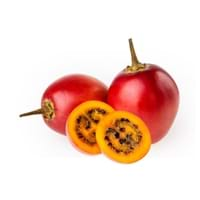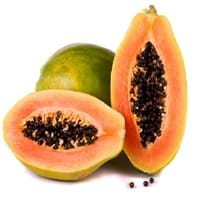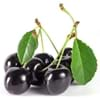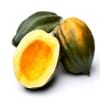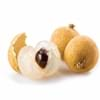Health Benefits
Cancer prevention, Improves eye vision, Prevents diabetes, Prevents high blood pressure
Arthritis prevention, Asthma treatment, Cancer prevention, Heart care, Prevents macular degeneration, Prevents rheumatoid
General Benefits
Cures inflamed tonsils, Helps in weight loss, Maintains healthy cholesterol level
Anti-inflammatory properties, Boosts immune system, Digestive aid, Healing of wounds, Maintains healthy cholesterol level, Strengthens bones
Skin Benefits
Anti-aging benefits, Protects skin from oxidative stress
Anti-aging benefits, Hydrates skin, Skin revitalization, Treatment of acne, Treatment of dark spots
Hair Benefits
Protects hair
Good conditioner, Promotes longer and healthier hair, Softening mask, Treatment of dandruff
Allergy Symptoms
Anaphylaxis, Coughing, Diarrhea, Eczema, Hives, Itching sensation in throat, Nausea, Skin Rashes, Runny nose, Sneezing, Swelling of mouth, tongue or lips, Vomiting, Wheezing
Abdominal pains, Carotenemia on excessive consumtion, Latex Allergy
Side Effects
Heart burn
Allergic reaction, Skin problems, Possibly unsafe during pregnancy
Best Time to Eat
Along with meal, As a snack in the late afternoon, Don't consume at night and before bed, Don't eat after meal, Morning time (before lunch)
As a snack in the late afternoon, Don't consume at night and before bed, Don't eat after meal
Vitamin B5 (Pantothenic Acid)
Vitamin C (Ascorbic Acid)
Vitamin K (Phyllochinone)
Phytosterol
Not Available
Calories in Fresh Fruit with Peel
Not Available
Not Available
Calories in Fresh Fruit without Peel
Calories in Frozen Form
Not Available
Type
Fruit vegetable
Melon, Tree fruit
Season
All seasons
All seasons
Varieties
Tamarillo bold gold, Tamarillo red beau, Tamarillo tango and Tamarillo teds red
Coorg Honey Dew, Pusa Dwarf, Pusa Giant, Pusa Majesty, Pusa Delicious, Pusa Dwarf, Solo, Ranchi, Taiwan-785 and Taiwan-786
Color
Orange, Red, Yellow
Orange, Yellow
Inside Color
Creamy Yellow
Orange
Taste
Tangy, Tart
Luscious, Sweet
Origin
South Africa
Mexico, Central America
Soil Type
Sandy loam, Well-drained
Rocky, Sandy, Well-drained
Climatic Conditions
Rainfall, Warm
Warm, Without frosts
Facts about
- Up until 1967, tamarillos were referred to as tree tomatoes.
- The name tamarillo is derived from Maori word 'tama' which means leadership and rillo from spanish word 'amarillo' which means yellow.
- Papaya seeds show contraceptive effects in male monkeys.
- Their seeds are used as a replacement for black pepper in some nations due to peppery taste.
- Papaya is known by funny names like paw paw or papaw and the mamao.
Top Producer
New Zealand
India
Other Countries
Australia, Chile, Colombia, Malaysia, Peru, Philippines
Brazil, Indonesia, Mexico, Nigeria
Top Importer
United States of America
United States of America
Top Exporter
New Zealand
Mexico
Botanical Name
Solanum betaceum
Carica papaya
Synonym
tree tomato, genus Cyphomandra, Cyphomandra
Not Available
Subkingdom
Tracheobionta
Tracheobionta
Division
Magnoliophyta
Magnoliophyta
Class
Magnoliopsida
Magnoliopsida
Subclass
Asteridae
Dillenhidae
Order
Solanales
Brassicales
Family
Solanaceae
Caricaceae
Species
Solanum betaceum
C. papaya
Generic Group
Nightshade
Papaya
Compare Tamarillo and Papaya
It is important compare Tamarillo and Papaya as both the fruits have a different nutritional value. Their comparison can be done on the basis of their vitamin and mineral content, calories, benefits as well as characteristics, making it easier for us to choose the best fruit for our diet. Their general health benefits are as follows:
Tamarillo Benefits: cures inflamed tonsils, helps in weight loss and maintains healthy cholesterol level.
Papaya Benefits: anti-inflammatory properties, boosts immune system, digestive aid, healing of wounds, maintains healthy cholesterol level and strengthens bones.
Fruits are also used as a remedy for various hair problems. The hair benefits of Tamarillo are: protects hair and hair benefits of Papaya are: good conditioner, promotes longer and healthier hair, softening mask and treatment of dandruff. Some fruits are known to cause allergic reactions. The allergy symptoms of first fruit are: anaphylaxis, coughing, diarrhea, eczema, hives, itching sensation in throat, nausea, runny nose, skin rashes, sneezing, swelling of mouth, tongue or lips, vomiting and wheezing and the symptoms of second fruit are: abdominal pains, carotenemia on excessive consumtion and latex allergy. Get sorted Tamarillo vs Papaya comparison with the help of fruit comparison tool by fruitvs.com.
